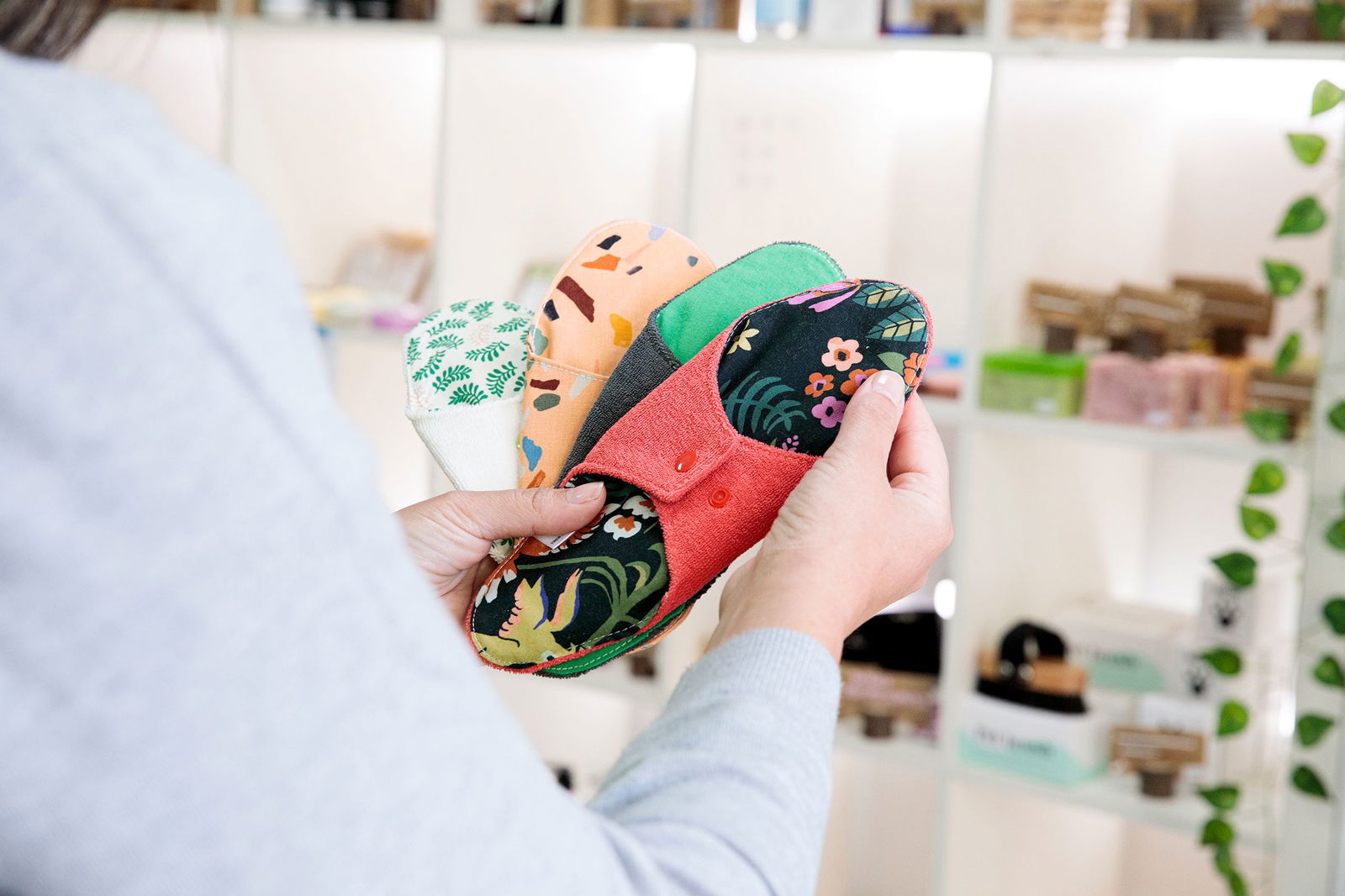Very high levels of toxic chemicals found in eco-friendly menstrual products, study says

Reusable menstrual products like these pads are increasingly popular.
By Sandee LaMotte, CNN
(CNN) — Extremely high levels of toxic chemicals called PFAS (perfluoroalkyl and polyfluoroalkyl substances) have been found in a small sampling of reusable menstrual pads and panties, according to a new study.
“Whether we wear feminine hygiene products or not, we will all be exposed,” said senior study author Graham Peaslee, a professor of physics, chemistry and biochemistry at the University of Notre Dame in Indiana.
“Everything in the US ultimately goes into landfills, and with time these forever chemicals leach into our drinking water, our irrigation water and our food supply,” Peaslee said.
Perfluoroalkyl and polyfluoroalkyl substances are called “forever” chemicals because they fail to break down fully in the environment. Known endocrine disruptors, various types of PFAS have been linked to serious health problems such as cancer, obesity, high cholesterol, decreased fertility, low birth weight, accelerated puberty and hormone disruption, according to the EPA.
The highest levels of contamination came from a type of “neutral” PFAS that scientists know exist but have just recently been able to measure and more thoroughly test for harm, the study found.
“We typically measure a type of PFAS called ionic, which has a charge, and we can measure those down to parts per trillion which is a low exposure level,” Peaslee said. (An ionic charge is the positive or negative charge of an ion, an atom that has gained or lost electrons.)
Newer technology is now allowing scientists to measure neutral PFAS — which have no charge. Some of the neutral versions are thought to be linked to the same health harms as the ionic versions, said Kathrin Schilling, an assistant professor of environmental science at Columbia University Irving Medical Center in New York City. She was not involved in the study.
“That’s important because neutral PFAS tend to fly under the radar but can be more easily absorbed through the skin, or even mucous membranes like those in the vagina because they can more easily move through fatty tissues,” said Schilling via email.
The new testing found an alarming amount of these neutral PFAS in some reusable period products, according to the study.
“When we measured the neutral PFAS there were much higher concentrations — not parts per trillion, not even parts per billion, but levels at parts per million — that’s very, very high,” Peaslee said.
What does that mean for the people using these products?
“The truth is, we still do not fully understand how they behave in the body or what long-term exposure might mean,” Schilling said.
“Neutral PFAS are not well studied, and there are no clear regulations for them yet.”
Some PFAS added intentionally
The study, published Tuesday in the journal Environmental Science and Technology Letters, analyzed 43 period underwear, eight reusable pads, four menstrual cups, three reusable incontinence underwear and one reusable incontinence pad — a total of 59 products. A separate part of the study also looked at tampons.
“We didn’t provide manufacturer names in our study However, the majority were US manufacturers,” Peaslee said. “We also looked at a few from South America, a couple from Australia and a couple from Europe. While the number of samples is small, we believe it was a representative snapshot.”
In addition to measuring neutral and ionic PFAS, the study examined whether PFAS was found at low enough levels to indicate it was inadvertently added due to contamination during the manufacturing process. Researchers also searched for higher levels of PFAS that would indicate the chemicals were likely added on purpose.
“What’s shocking is that we found 33% of period underwear and 25% of reusable pads had intentional PFAS use — meaning the chemicals had been put there, likely to keep the products from leaking,” Peaslee said.
Many reusable materials were sourced from third-party suppliers in other countries, who may not be as aware of the dangers of PFAS as domestic manufacturers, he said.
“It did seem to be random — sometimes they put PFAS in the inside layer of material, sometimes on the outside, sometimes between the layers, all of which suggests they have no idea what they’re doing,” Peaslee added.
“There’s no labeling, so consumers have no clue because there’s no way they can tell.”
There were some encouraging findings, said lead author Alyssa Wicks, who conducted the research while a graduate student at Notre Dame.
“Only a subset of the products had high levels of PFAS present, which means that PFAS must not be essential in the manufacture of reusable feminine hygiene products,” said Wicks, now a postdoctoral assistant in the Nicholas School of the Environment at Duke University in Durham, North Carolia.
“Manufacturers should be able to make these textile products without chemicals of concern in them,” Wicks said in a statement.
A growing number of teens and adults are looking for more eco-friendly choices at a time when scientists still know very little about how much PFAS and other chemicals are actually absorbed via vaginal tissue over time, Schilling said.
“That is a huge gap in our understanding, especially given how many people rely on these products monthly for years,” she said. “While these findings might seem niche at first glance, they point to a broader need for research, regulation, and transparency around the materials used in all menstrual products.”
The-CNN-Wire
™ & © 2025 Cable News Network, Inc., a Warner Bros. Discovery Company. All rights reserved.


